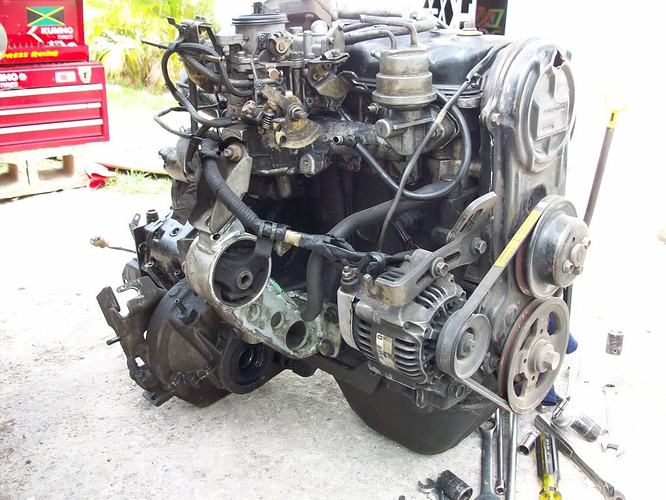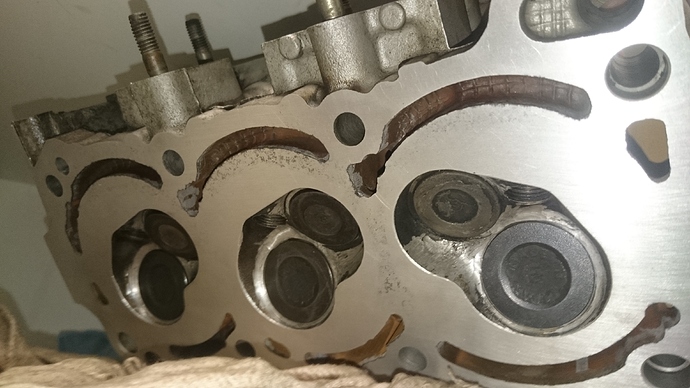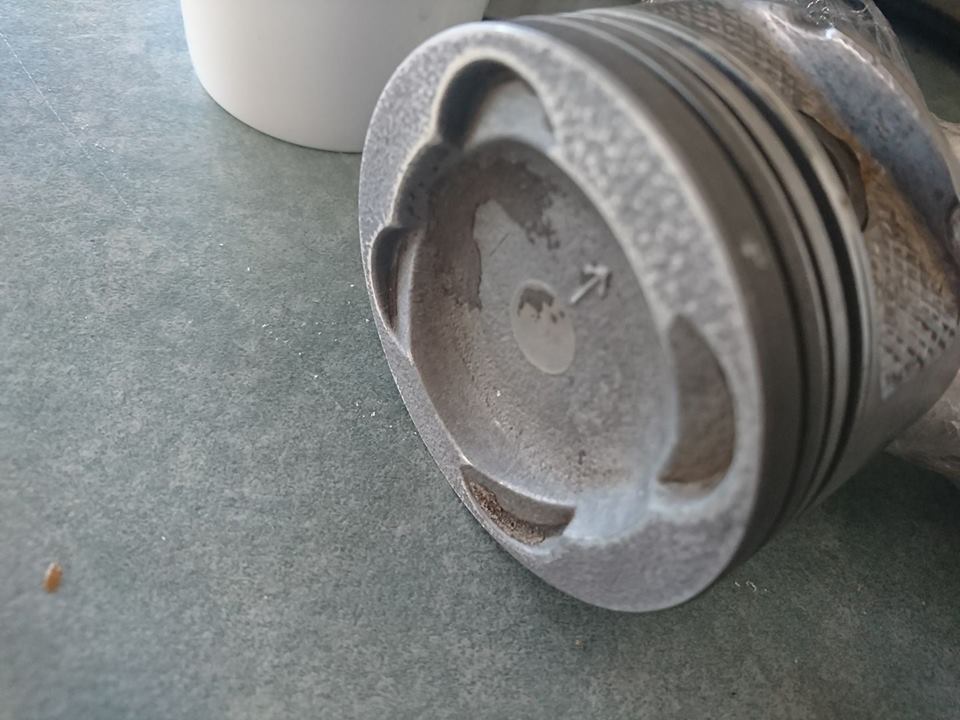Daihatsu E-Series Engines
Please note that on a mobile device you will not see the entire tables listed in this thread
The Daihatsu E-series engine is a range of compact three-cylinder, internal combustion piston engines, designed by Daihatsu, which is a subsidiary of Toyota. The petrol-driven series has cast iron engine blocks and aluminum cylinder heads, and are of either SOHC or DOHC design, with belt driven heads.
The E series engine was first presented in the summer of 1985, as the EB, a replacement for the two-cylinder AB engine used in Daihatsu’s Kei cars until then. The engine was Daihatsu’s second three-cylinder design Originally with two valves per cylinder, four-valve versions later appeared as did turbocharged versions. The engine is quite light, with the original EB-10 weighing in at 60–63 kg (132–139 lb) depending on
(ED10 Engine)
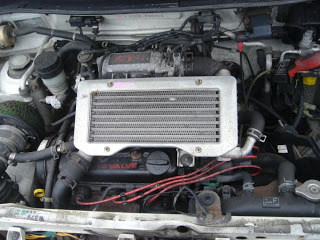
(EF-JL Engine)
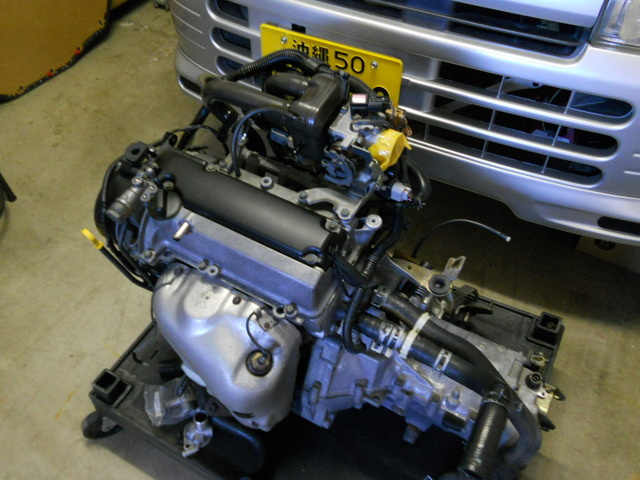
(EJ-DE Engine, Photo courtesy of @601to602 )

(EF-RL Engine)
EB-series (550 cc)
The EB-series is a 547 cc (0.55 L) version built in Daihatsu’s Osaka plant in Japan, meant for their domestic market range of Kei cars. Bore is 62 mm and stroke is 60.5 mm, with a firing order of 1—2—3. Outputs range between 32 PS (24 kW) to 64 PS (47 kW), the maximum allowed for a Kei car. Power claims for the very earliest Mira/Cuore models are in gross rather than net, which explains slight differences in power ratings for the first few years. This engine has not been exported to any great extent, with Daihatsu’s export models usually receiving the larger ED and C-series engines.
The EB-series was only ever available with an SOHC valvetrain and two valves per cylinder, as Daihatsu were late to adopt multi-valve technology for their kei car range. However, the EB was available with an IHI turbocharger and intercooler, originally carburetted but later with fuel injection. This is still the only Kei engine to have reached the 64 PS threshold with only two valves per cylinder. There is also a rare supercharged version developed for the Hijet Pickup, to provide extra low-down torque and allow for an air conditioning unit to be fitted and used even when heavily loaded. This engine was also used for an economy version of the Italian Innocenti Mini, until replaced by the later 660 cc EF engine.
Applications:
Daihatsu Mira/Cuore (L70/71)
Daihatsu Leeza (L100)
Daihatsu Hijet/Atrai (S80/81)
1987-1990 Innocenti 500 L/LS
Engine Varients(EB)
| Varient | Induction | KW | @RPM | NM | @RPM | Comp | Fuel System | Chassis |
|---|---|---|---|---|---|---|---|---|
| EB-10 | NA | 24 | 6000 | 43 | 3500 | 10 | Carb | Mira/Cuore |
| EB-20 | Turbo | 50 | 6500 | 69 | 4000 | 8.3 | Carb,IC | Mira TR (EB-20 1985) |
| EB-21 | Turbo | 50 | 6000 | 69 | 3500 | 8.3 | Carb,IC | Lezza Van |
| EB-25 | Turbo | 43 | 6500 | 73 | 4000 | ? | EFI,IC | Mira TR-XX (1987-1988) |
| EB-26 | Turbo | 47 | 6500 | 76 | 4000 | 8 | EFI,IC | Mira TR-XX (1988-1990) |
| EB-40 | NA | 24 | 6000 | 43 | 3500 | 10 | Carb | Lezza |
| EB-45 | NA | 24 | 6000 | 43 | 3500 | 10 | Carb | Lezza |
| EB-50 | Turbo | 50 | 6500 | 69 | 4000 | 8.3 | Carb,IC | Cure CR (EB-50 1985) |
| EB-60 | NA | 22 | 5500 | 44 | 3500 | 10 | Carb | Hijet Atari (1986) |
| EB-70 | Turbo | 34 | 6000 | 64 | 3500 | 8.6 | Carb,IC | Atari (1986) |
| EB-71 | Turbo | 38 | 6000 | 71 | 4000 | 8.6 | Carb,IC | Atari (1988) |
| EB-80 | S/C | 32 | 6000 | 59 | 3500 | ? | Carb | Hitjet Pickup (1987) |
ECU Models
| Varient | ECU Number | Chassis |
|---|---|---|
| EB-10 | ? | ? |
| EB-20 | ? | ? |
| EB-21 | ? | ? |
| EB-25 | ? | ? |
| EB-26 | ? | ? |
| EB-40 | ? | ? |
| EB-45 | ? | ? |
| EB-50 | ? | ? |
| EB-60 | ? | ? |
| EB-70 | ? | ? |
| EB-71 | ? | ? |
| EB-80 | ? | ? |
###Service Details
| Varient | Oil Filter | Spark Plug | Air Filter | Fuel Filter | Spark Gap | Timing |
|---|---|---|---|---|---|---|
| EB-10 | ? | ? | ? | ? | ? | ? |
| EB-20 | ? | ? | ? | ? | ? | ? |
| EB-21 | ? | ? | ? | ? | ? | ? |
| EB-25 | ? | ? | ? | ? | ? | ? |
| EB-26 | ? | ? | ? | ? | ? | ? |
| EB-40 | ? | ? | ? | ? | ? | ? |
| EB-45 | ? | ? | ? | ? | ? | ? |
| EB-50 | ? | ? | ? | ? | ? | ? |
| EB-60 | ? | ? | ? | ? | ? | ? |
| EB-70 | ? | ? | ? | ? | ? | ? |
| EB-71 | ? | ? | ? | ? | ? | ? |
| EB-80 | ? | ? | ? | ? | ? | ? |
ED-Series Engines (850cc)
The ED-series is a 847 cc (0.85 L) version originally intended for the export versions of the Cuore/Mira. This engine has never been available in the domestic Japanese market. Bore is 66.6 mm and stroke is 81 mm. The ED engine was to undergo a long development as production was later taken over by Malaysia’s Perodua, who still produce it in its latest, DVVT form. There was also a short-lived special version for the Swiss markets, where several cantons had tax systems which favoured cars of less than 800 cc. This, the ED-10A, had a two millimeter narrower bore (64.6 x 81 mm) for a displacement of 796 cc, and had also been license-made by the now-defunct Asia Motors to be fitted in the Towner, which was a licensed copy of the Daihatsu Hijet. In 1994 Daihatsu equipped the ED series with indirect multipoint fuel injection, called the ED-20. Daihatsu fitted this 847 cc displacement ED-20 engine to the L500 series 1994.09–1998.05 Daihatsu Cuore/Domino/Handi export model and in early export versions of the Daihatsu Move.
ED10 combustion chamber. Note the head has been faced and some work has been performed to the combustion chamber either for running low quality fuel or to allow an increase in compression that allows “pump gas”. Regardless the valve configuration and valve size shown is “as per std”.
Applications:
1986.10–1990.05 Daihatsu Cuore/Domino/Handi (L80)
1994.09–1998.05 Daihatsu Cuore/Domino/Handi (L500 series)
1996.10-1999.10 Daihatsu Move (L601)
2001.07–2006 Daihatsu Ceria (Indonesia)
1994–2007 Perodua Kancil
2007–2014 Perodua Viva
Engine Varients (ED)
.tg {border-collapse:collapse;border-spacing:0;} .tg td{font-family:Arial, sans-serif;font-size:14px;padding:10px 5px;border-style:solid;border-width:1px;overflow:hidden;word-break:normal;} .tg th{font-family:Arial, sans-serif;font-size:14px;font-weight:normal;padding:10px 5px;border-style:solid;border-width:1px;overflow:hidden;word-break:normal;} .tg .tg-baqh{text-align:center;vertical-align:top} .tg .tg-amwm{font-weight:bold;text-align:center;vertical-align:top}| Varient | Layout | KW | @RPM | NM | @RPM | Comp | Fuel System | Chassis |
|---|---|---|---|---|---|---|---|---|
| ED-10 | 6V SOHC | 32 | 5500 | 67 | 3200 | 9.5 | Carb | L70, L200?? |
| ED-20 | 6V SOHC | 32 | 5600 | 67 | 3800 | 9.5 | EFI | L500(1994-1998), L600 Move (1996-1999) |
| ED-DE | 12V DOHC | 37 | 5200 | 74.4 | 4000 | 10.1 | EFI | L500, JP-L700 |
| ED-VE | 12V DOHC | 39 | 6000 | 76 | 4000 | 10 | EFI | Perodua Viva 850 |
ECU Models
| Varient | ECU Number | Chassis |
|---|---|---|
| ED-10 | ? | ? |
| ED-20 | ? | ? |
| ED-DE | ? | ? |
| ED-VE | ? | ? |
Service Details
| Varient | Oil Filter | Spark Plug | Air Filter | Fuel Filter | Spark Gap | Timing |
|---|---|---|---|---|---|---|
| ED-10 | Z386 | Denso - W20EXR-U (Standard Plug) | ? | ? | ? | ? |
| ED-20 | ? | Denso - W20EXR-U11 (Standard Plug) | ? | ? | ? | ? |
| ED-DE | ? | ? | ? | ? | ? | ? |
| ED-VE | ? | ? | ? | ? | ? | ? |
Gearbox
(this should be moved to the Gearbox wiki section once enough information is available)
| Gearbox Ratio | 1st | 2nd | 3rd | 4th | 5th |
|---|---|---|---|---|---|
| EF-EL | 3.5 | 2.11 | 1.392 | 0.971 | 0.794 |
ED10 should be the same save for the fact that the use of the taller 3.9 final drive has allowed the ommision of fifth gear. Most comon for the 5speed is a final drive of about 4.8. There is also a 4.4 and ? Crownwheels are replaceable as single items, however, the “pinion” is integral to the mainshaft so damaging any of the gears means the another mainshaft with the same pinion needs to be found unless machining off the gears and welding on new ones.
